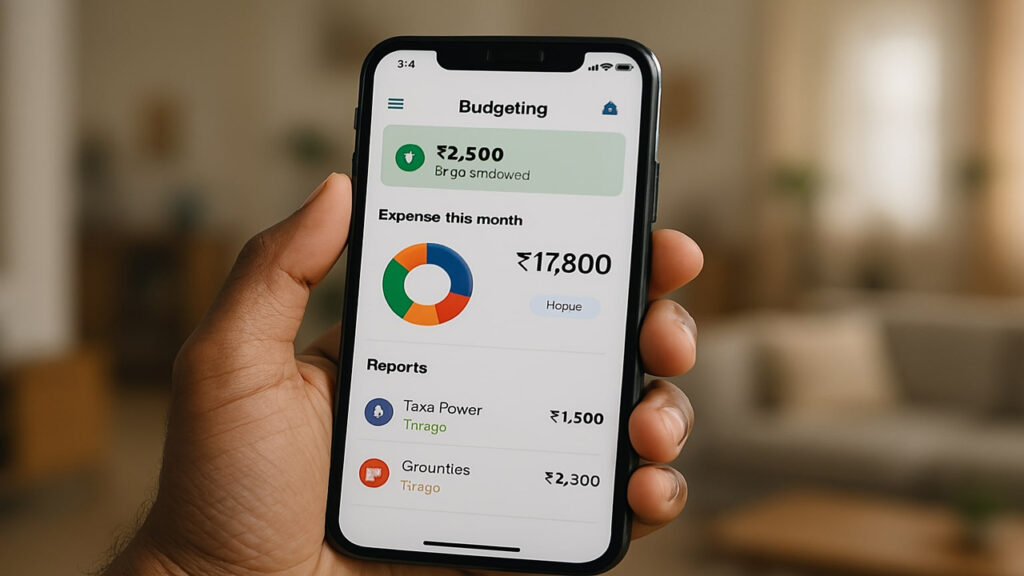Managing your personal finances well is one of the most important skills you can develop, especially if you are a salaried individual in India. With rising expenses and various financial commitments, it can become overwhelming to keep track of where your money goes every month. That’s where creating a monthly budget plan comes in—it helps you manage your income efficiently, prioritize your expenses, save for future goals, and avoid unnecessary debt.
If you are new to budgeting or have struggled to maintain control over your money, this detailed guide will help you understand how to create a monthly budget plan tailored specifically for salaried individuals in India. The process might seem daunting at first, but once you get the hang of it, budgeting will become second nature and transform your financial well-being.
Why Is a Monthly Budget Plan Important?
A monthly budget plan acts like a financial roadmap that guides you through your income and expenses every month. It shows you exactly how much money is coming in, where it is going, and how much you can save or invest. Without a budget, it is easy to spend impulsively and run into cash crunches or debt, especially when unexpected expenses arise.
In India, salaried individuals often face fluctuating costs such as utility bills, educational fees, health expenses, and family obligations, which makes having a solid budget even more crucial. Budgeting helps ensure that you live within your means, save systematically, and plan for both short-term and long-term financial goals.
Remember, budgeting is not about restricting yourself but about spending mindfully and securing your financial future.

Step 1: Know Your Total Monthly Income
The first step in creating a budget is to understand how much money you actually take home each month. For salaried employees, this means calculating your net income, which is the amount left after all statutory deductions such as income tax, employee provident fund (EPF), professional tax, and any other withholdings.
You can check your monthly salary slip to find this figure accurately. If you want to understand your tax deductions better, the Income Tax Department’s official e-filing portal provides useful information about tax brackets, deductions, and net salary calculations.
In addition to your salary, include any other sources of income, such as rental income, dividends, freelancing, or interest from savings accounts. Knowing your total monthly income gives you a clear starting point for budgeting.

Step 2: Track and Categorize Your Monthly Expenses
Understanding where your money goes is crucial before you can create a budget. Begin by tracking all your expenses for at least a month. This includes everything from rent or home loan EMIs to groceries, utility bills, transportation, and discretionary spending like dining out or shopping.
You can divide expenses into three main categories:
- Fixed Expenses: These are regular and predictable, such as rent, EMIs, insurance premiums, school fees, and utility bills.
- Variable Expenses: These vary month to month and include groceries, dining, entertainment, travel, and gifts.
- Savings and Investments: Monthly contributions towards your savings, mutual funds, SIPs, or emergency fund.
Tracking expenses can be done manually by maintaining a diary or spreadsheet, or you can use popular Indian expense tracking apps like Walnut, Money View, or ET Money which can link your bank accounts and credit cards for automatic expense categorization.

Step 3: Set Clear Financial Goals
Budgeting is more effective when you have clear goals to work toward. Your goals can be short-term, like saving for a vacation or buying a gadget, or long-term, such as buying a house, children’s education, or retirement planning.
For salaried individuals in India, common financial goals include:
- Building an emergency fund covering at least 6 months of expenses to handle unforeseen situations.
- Paying off high-interest debts like credit card balances or personal loans.
- Investing in tax-saving instruments like Public Provident Fund (PPF), Equity Linked Savings Schemes (ELSS), or National Savings Certificates (NSC).
- Planning for children’s higher education or marriage.
When setting goals, it is important to be realistic and prioritize. For example, starting with an emergency fund and debt repayment before aggressive investments is a wise strategy.

Step 4: Allocate Your Income According to a Budgeting Plan
After understanding your income, expenses, and goals, the next step is to create an actionable budget by allocating your money wisely each month. A popular and easy-to-follow budgeting guideline is the 50/30/20 rule. This rule suggests:
- Spending 50% of your income on needs, which include rent, groceries, utilities, EMIs, and essential bills.
- Allocating 30% for wants, such as dining out, entertainment, travel, and shopping.
- Reserving 20% for savings and investments to secure your future.
For instance, if your monthly take-home salary is ₹50,000, you would ideally spend ₹25,000 on essentials, ₹15,000 on discretionary expenses, and ₹10,000 on savings or investments.
However, this rule is flexible. Depending on your lifestyle and obligations, you may need to adjust the percentages. For example, if your rent or EMIs are higher, you might reduce spending on wants to increase your savings.

Step 5: Use Tools and Apps to Stick to Your Budget
Sticking to a budget requires discipline, but fortunately, technology makes it easier. Numerous budgeting apps and tools are tailored for Indian users and help you track expenses, remind you of bill payments, and monitor your progress toward savings goals.
Apps like GoodBudget, Monefy, and ET Money can categorize expenses, send notifications when you approach limits, and even help you invest directly. These tools reduce manual effort and help maintain budgeting discipline.
Besides apps, setting calendar reminders for due dates on EMIs, insurance renewals, and investment contributions can prevent late fees and missed opportunities.

Step 6: Review and Adjust Your Budget Regularly
A budget is not a one-time plan; it requires regular review and adjustments. Your income, expenses, and goals will change over time due to salary increments, new financial responsibilities, or changes in lifestyle.
Review your budget monthly by checking whether you stuck to your planned expenses, if any categories need trimming, or if you can increase your savings. For example, if you receive a bonus or a raise, decide how much of that extra income you want to allocate toward savings or discretionary spending.
Making budgeting a monthly habit will help you stay on top of your finances and ensure your financial plan remains relevant and achievable.

The Benefits of Budgeting for Salaried Individuals in India
Creating and maintaining a monthly budget plan has several important benefits. It gives you better control over your finances, helping you avoid overspending and manage debt effectively. Budgeting enables you to prioritize your financial goals, whether that is building an emergency fund, investing for retirement, or saving for a home.
In addition, having a budget prepares you for emergencies and unexpected expenses, reducing financial stress. It also cultivates financial discipline and clarity, which are key to achieving long-term financial security.

Conclusion
For salaried individuals in India, creating a monthly budget plan is a vital step toward financial freedom. It may take some effort at the beginning, but the rewards are well worth it. By knowing your income, tracking your expenses, setting clear financial goals, allocating your money wisely, and reviewing your budget regularly, you can take control of your money and build a secure financial future.
Start today by noting your monthly income and expenses, set realistic goals, and choose a budgeting method or app that works best for you. With patience and consistency, budgeting will become a natural habit that empowers you to live comfortably and save smartly.
FAQs
Q1: How to start budgeting if I have never tracked my expenses before?
A: Start by recording all your expenses for one month, either manually or using an expense tracking app. This will help you understand your spending patterns and form the basis of your budget.
Q2: Is the 50/30/20 budgeting rule suitable for everyone in India?
A: It is a good starting guideline but can be adjusted based on your income, living costs, and financial goals.
Q3: How much should a salaried individual save monthly?
A: A general recommendation is to save at least 20% of your net income, but start with what you can and gradually increase your savings.
Q4: What are some good investment options for salaried individuals in India?
A: Popular options include PPF, Employee Provident Fund (EPF), Fixed Deposits, Mutual Funds via SIPs, and tax-saving instruments like ELSS.
Q5: How should I budget for irregular expenses like festivals or vacations?
A: Set aside a small amount each month in a separate fund dedicated to such expenses, so you don’t overspend when these occasions arise.
Q6: Do I need to track daily expenses strictly?
A: Daily tracking is ideal but can be adjusted. Weekly or biweekly tracking can also work if that fits your lifestyle better.
Q7: How can I budget if my income is variable?
A: Calculate your average monthly income over 6-12 months and plan your budget based on the lower average to avoid overspending.
Q8: What budgeting tools are best suited for salaried Indians?
A: Apps like ET Money, Money View, and Walnut are popular and effective for budgeting and expense tracking.
Q9: How often should I revisit my budget?
A: Monthly review is recommended to accommodate any changes in your income, expenses, or financial goals.
Q10: Can budgeting help me reduce debt?
A: Yes, budgeting identifies areas where you can cut expenses and allocate more funds towards paying off debts systematically.
